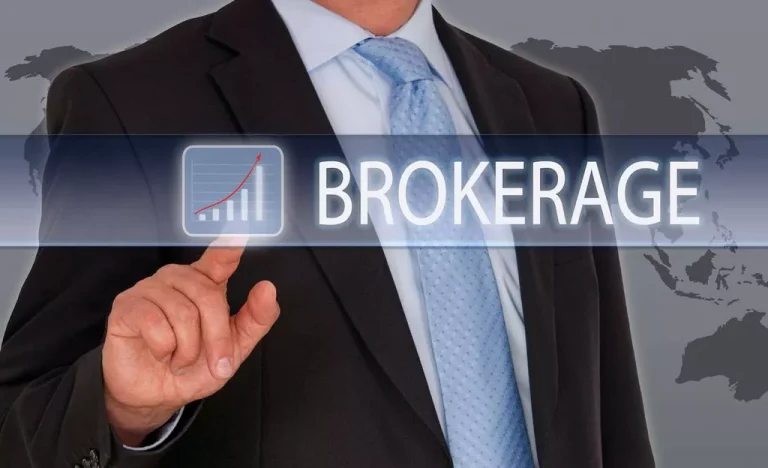Which Is Better? Energetic Investor Or Passive Investor
Successful passive traders preserve a long-term perspective and disregard what is one downside of active investing short-term setbacks—even severe downturns. We know that passive investors comply with a buy-and-hold method to investing. Due to this, their investments can benefit from the compounding effects and general growth of the market.

Things To Remember While Choosing Active Vs Passive Investments
The debate about energetic investing vs. passive investing is a never-ending one. However, figuring out about these methods will assist you to make better choices that support your financial targets. In active funds, fund managers can modify the fund’s portfolio in response to changing market situations. This adaptability helps capitalize on emerging Stockbroker opportunities and mitigate dangers. Fund managers can actively manage danger by adjusting the fund’s portfolio composition.
Energetic Vs Passive Investing: Which One Must You Pick?
As already discussed earlier, passive funds are usually transparent and stable, have a decrease risk of volatility in efficiency, and involve https://www.xcritical.in/ decrease prices. All such elements forestall buyers from experiencing emotional setbacks and assist them keep disciplined with their long-term savings. Since buyers are not tied to particular funding choices, they can decide whether or not to keep their money in a selected funding choice or move it to wherever they see an opportunity for it to grow.
Disadvantages Of Passive Portfolio Administration:
These professionals purpose to beat the market and generate larger returns for his or her shoppers by way of tactical asset allocation and safety selection. So in energetic investing, the portfolio manager wields the authority in making selections. Actively managed portfolios normally embrace shares of varied companies that pay common dividends. When investors put money in such shares, these dividends are supplied to them as a gentle stream of revenue.

They conduct in-depth research and analysis, and traders benefit from the fund supervisor’s expertise. With expert fund managers aiming to establish alternatives that would lead to greater returns, investing in actively managed funds can significantly enhance your wealth in the long term. Passive investing, compared to lively investing, takes a long-term strategy to holding investments. Although it could be applied to any financial instrument, index investing is the most well-liked type of passive investing. Typically, passive buyers purchase index funds in order to keep away from repeatedly inspecting individual securities.
In that strategy, investors limit the sale and buy of stocks, bonds, etc within their portfolio and invest for the lengthy term. Instead of taking benefit of market volatility, they experience it out with minimal changes to their portfolio until absolutely required. They don’t react to each and every market move but have a extra purchase and maintain strategy with the principle aim of generating sturdy returns in the lengthy run. It is a less expensive method of investing compared to lively investment.
Ratan Priya is devoted to supporting purchasers throughout each part of their monetary journey, providing personalized, strategic counsel focusing on long-lasting success. Ambika is known for her deep understanding of market trends, her ability to simplify complicated financial ideas, and her dedication to shopper training and empowerment. Ambika believes that monetary success is not only about accumulating wealth, but about making a secure and fulfilling future. She is passionate about educating her shoppers and empowering them to make informed monetary decisions.
In many instances, economic components and market situations influence a fund’s performance. Also, some funds might underperform their benchmark indices, particularly considering the cumulative impression of charges. If you may be looking for very excessive returns and have the danger appetite as nicely then passive investing is in all probability not for you. Since that is the defensive fashion of investing, the returns are at all times going to be much like the returns generated by the benchmark index. If you may be in search of greater returns, than you may need to go for energetic investing. In passive investing the investor or fund manager creates a portfolio of shares which is identically just like another portfolio of stocks or an index.
Say if Sensex goes via a rejig, the fund manager will have to make the identical adjustment in his/her fund. In Passive Portfolio Management, the fund supervisor is simply expected to ape the benchmark’s performance. Active managers also can hedge their bets via various methods corresponding to quick gross sales or put choices, and they can abandon sure companies or sectors when the risks become too excessive. Passive managers are obligated to maintain the shares that the index they monitor, no matter their efficiency.
To sum it up, think of active investing as the one where the investor has management over the buying and promoting selections of the property. For instance, a large-cap active mutual fund manager would continually look for alpha returns by regularly buying and promoting stocks. Alternatively, a passive mutual fund supervisor would monitor an index like S&P 500 or NIFTY 50 and be certain that there are no tracking errors.
- This makes it a fantastic option for buyers who need a hands-off method to their funding.
- Just write the checking account number and signal in the software kind to authorise your financial institution to make payment in case of allotment.
- By holding quality assets for longer time intervals, we’re counting on letting compounding returns present long run benefits.
- No fund has managed to achieve 18% CAGR returns over the past 10 years and solely two funds have given returns of 16%.
Just write the bank account quantity and signal in the application type to authorize your bank to make fee in case of allotment. This makes it an economical funding with modest retention, versatile asset allocation, well-defined funding outlooks, and a longer-term aim in thoughts, similar to retirement plans. Regardless of the chosen path, success in funding is commonly decided by disciplined planning, endurance, and maintaining a keen eye on each dangers and alternatives.
An active investor aims to generate higher returns as in comparison with mutual funds or banks. We will perceive passive investing too with the help of an instance. In ETFs, the fund maps the movement of an index and that’s all the fund does.
Passive investing is when the fund manager simply tries to replicate the portfolio of the index being tracked. So if the benchmark index for the fund manager is the Sensex, he/she will only buy shares which are components of the Sensex, that too in the same proportion as within the precise index. It is a purely replication-based strategy that tries to match index returns. This is as a end result of the first objective of an active mutual fund is to beat its benchmark index. This makes it a great possibility for investors who want a hands-off strategy to their investment.
